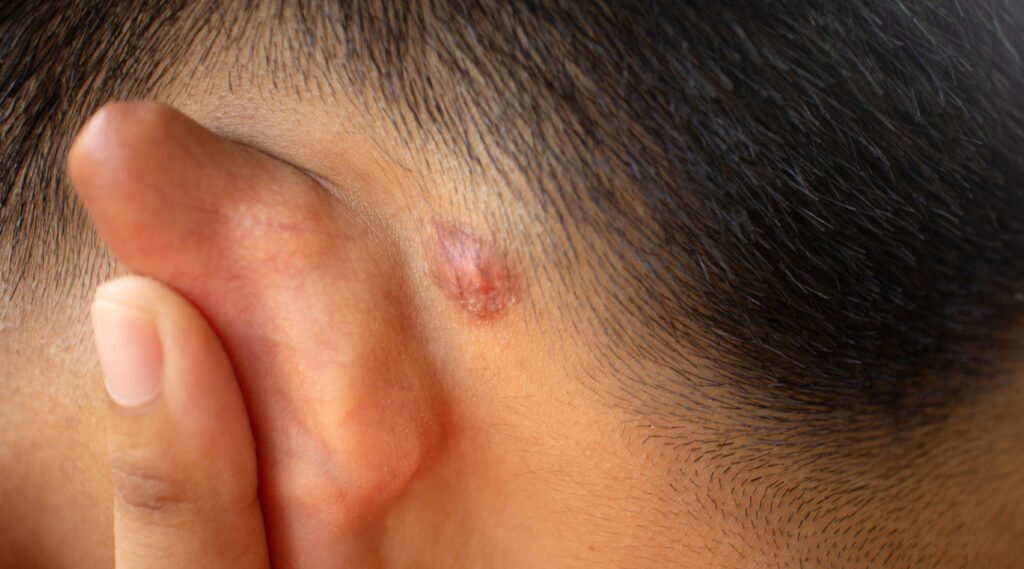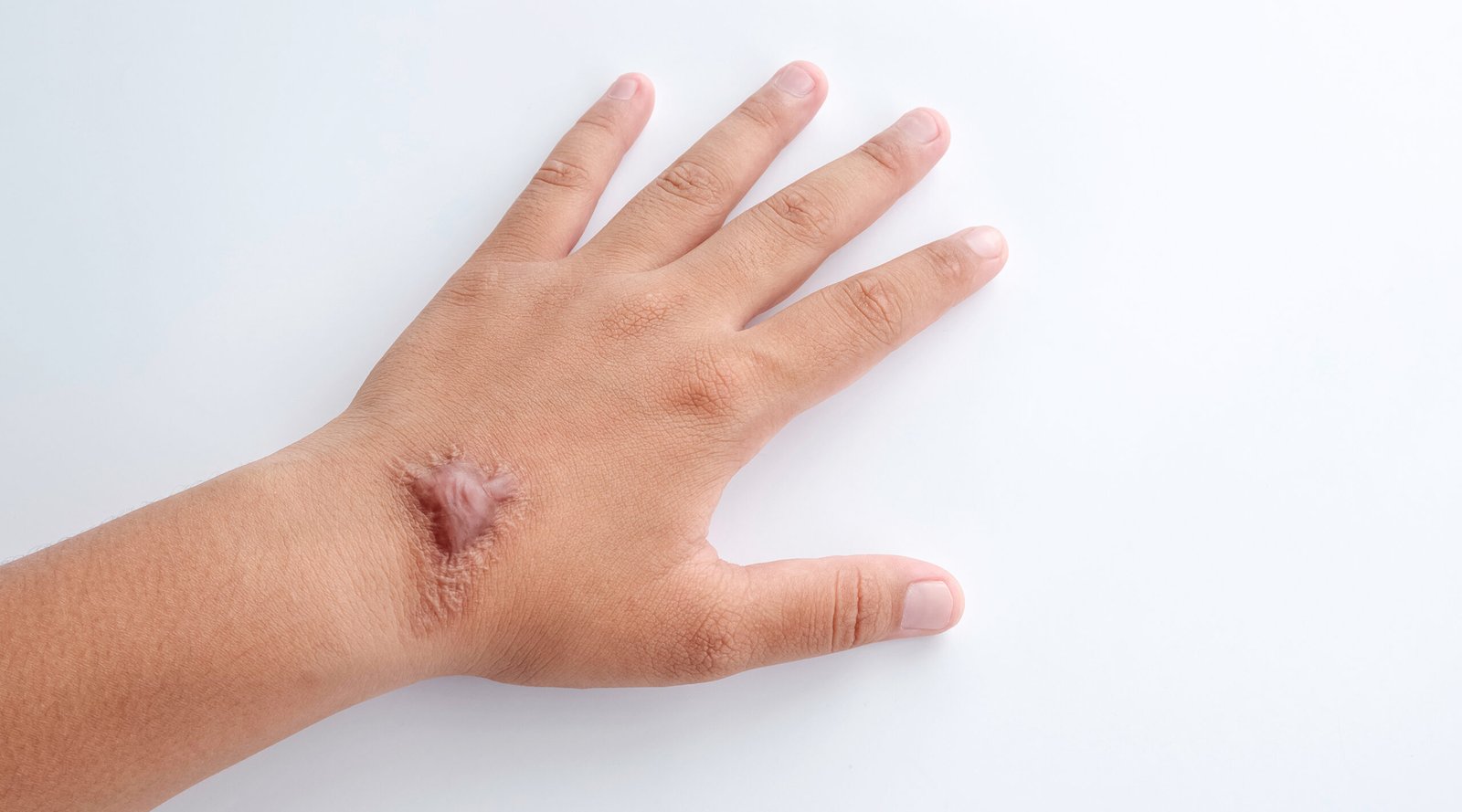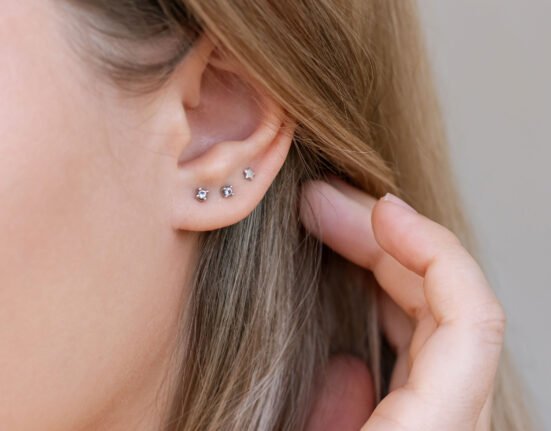Have you ever noticed a small cut on your skin that healed but left behind a thick, raised scar that just wouldn’t fade?
That might not be an ordinary scar. It could be a keloid. While keloids aren’t dangerous to your health, they can feel uncomfortable and affect your confidence.
What Are Keloids?
Scars are part of the body’s natural healing process. When your skin is injured, the body produces new tissue to close and repair the wound. Most scars fade over time. But keloids are different.
A keloid is an overgrowth of scar tissue. It appears raised, thick, and may even grow larger than the original wound.
They can develop anywhere on the body, but are most common on the ears, shoulders, cheeks, and chest.
The good news: keloids aren’t harmful. However, they often cause discomfort, itching, or even pain, and can be a cosmetic concern.
That’s why prevention and early care are so important.
Signs of a Keloid
Keloids appear months after an injury, though in some cases they can show up years later. Common features include:
- A thick, raised scar with an irregular shape
- Shiny, smooth surface without hair growth
- Size varies depending on the wound and growth duration
- Texture may feel soft, firm, or rubbery
- Colors range from red, brown, to purplish
- Often itchy
- Sometimes painful or tender
Why Do They Form?

The exact cause of keloids isn’t fully understood. Essentially, they develop when the body produces too much collagen (the protein that builds skin) during the healing process. This leads to an overgrowth of scar tissue.
Skin injuries that can trigger keloids include:
- Acne
- Insect bites
- Burns
- Injections or vaccinations
- Ear or body piercings
- Small cuts or scratches
- Hair removal
Interestingly, some keloids form without any clear reason.
How to Prevent Keloids
If you’re prone to keloids, here are some steps to reduce your risk:
1. Proper Wound Care
Keep wounds clean and moist. Gently wash with soap and water, then moisturize the area with wund+™ Regeneration Cream. Apply several times a day as needed.
2. Avoid Unnecessary Skin Trauma
Try to prevent skin injuries whenever possible. Consider skipping body piercings, tattoos, or elective surgeries. Even minor issues, like ingrown hairs or small scratches, can trigger keloid formation.
3. Use wund+™ Wound Scar Gel
If a scar has already formed, don’t panic. There are ways to minimize its appearance. Besides medical options like laser treatments or silicone gel sheets, you can also try specialized scar care products.
One option is wund+™ Scar Gel, which contains Stem Cell Centella Reversa to support skin regeneration.
It not only hydrates scar tissue but also helps smooth the texture and fade its appearance. The formula is lightweight, absorbs quickly, and feels comfortable for daily use.
Apply twice a day to improve results. For those bothered by stubborn scars, this can be a practical choice before considering more invasive medical treatments.
Scars are proof that your body is healing. Most fade with time. But with the right care—from simple daily habits to targeted products like wund+™ Scar Gel—you can help speed up the process and make scars far less noticeable.
References
Cleveland Clinic. Accessed in 2025. Scars.
Mayo Clinic. Accessed in 2025. Keloid Scar.
Medical News Today. Accessed in 2025. How can home remedies get rid of my old scar?














Leave feedback about this